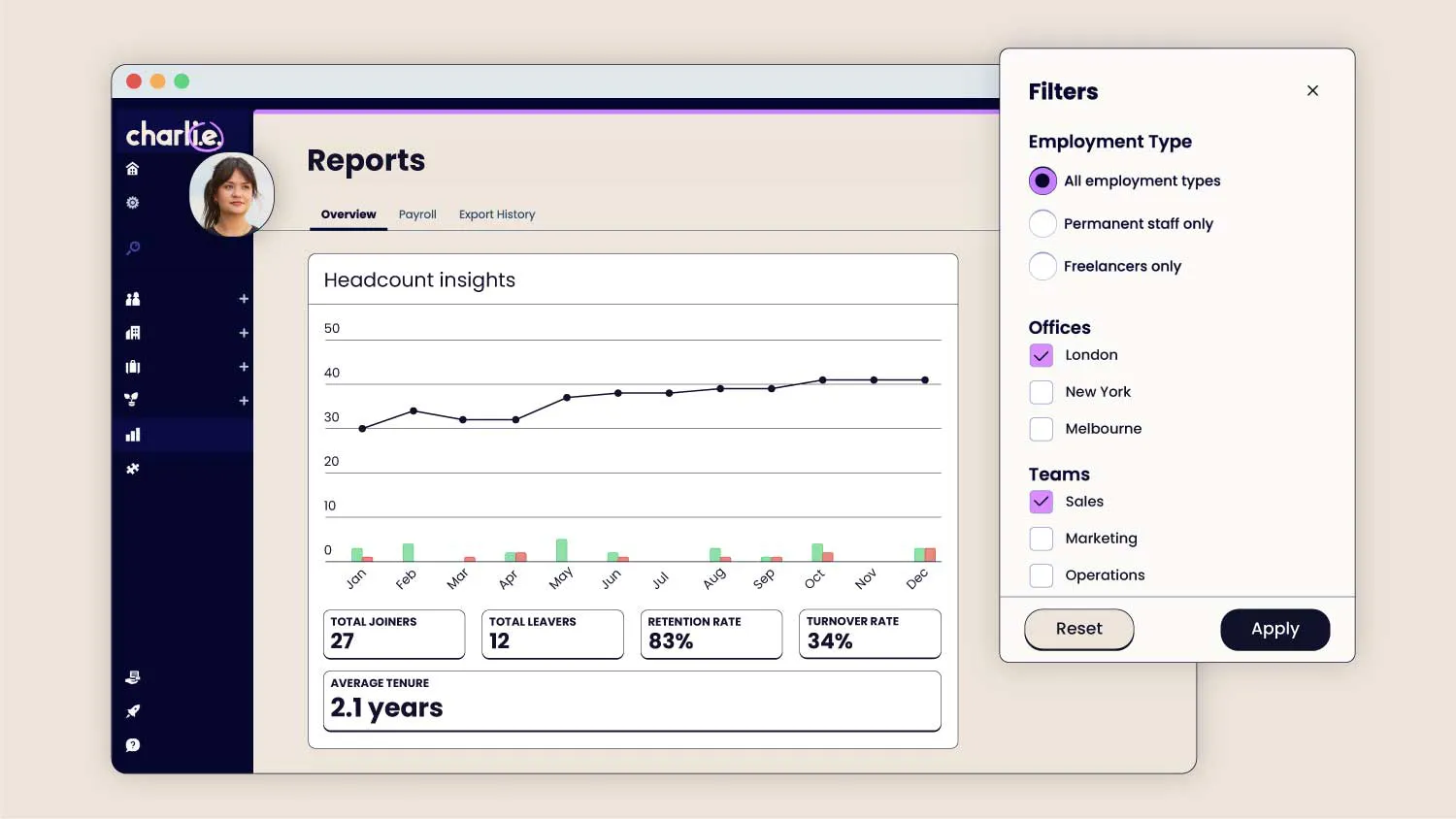How to calculate employee retention rate

In a small business, you work with what you have. Every team member’s presence, every role big and small counts for a lot.
Employee retention rate is one of the metrics I look at very closely at Charlie. It shows me whether my employee engagement initiatives are working as they’re supposed to. I want to help build a team that grows together and stays together. That on its own is the foundation for any small business.
Your employee retention rate can show you all these things and more. Your employees may leave your organisation for all sorts of reasons that have nothing to do with you. Regardless, calculating your employee retention rate and understanding what factors are moving it one way or the other can help you see trends and patterns.
Your business will never be perfect, and neither will your employee retention rate. If you know it and understand it though, you can make it the best it can be, and build a company that your team members feel good about working for.
That’s what I hope to accomplish with this post, and show you how to calculate your employee retention rate and why they matter for your small business.
How to calculate your employee retention rate
Your average employee retention rate is calculated as the percentage of employees who remain employed at your company over a given period, usually a year.
Employee retention rate as a metric shows you how effective your HR strategies are at improving your employee satisfaction. It quantifies how happy, engaged, and fulfilled they are at your organisation.
Here’s how you can calculate your employee retention rate in simple steps:
- Step 1: Define the time period: Choose a measure of time to calculate your employee retention rate. I suggest going back at least a year. Be consistent with it in your future calculations, so that your measurements stay consistent over time.
- Step 2: Count initial employees: For starters, make a count of all the employees you had at the beginning of your chosen period. That means everyone, including your part-timers and temporary staff.
- Step 3: Count employees who left: Then, keep track of the employees who left during your given period, including both voluntary and involuntary resignations
- Step 4: Calculate remaining employees: Subtract that last number from the employees left from your initial count, to get the employees who stayed with you until the end of the period
- Step 5: Apply the formula: Finally, use the numbers you got from the previous steps and plug them into the formula below:
(No. of Remaining Employees/Initial Number of Employees)*100 = % Employee Retention Rate
Here’s an example. Let’s say you start the day with 50 employees. Over the year, 8 employees leave. Using this formula, your employee retention rate would be:
(42 remaining employees/50 initial number of employees)/100 = 84% employee retention rate
You can then refer to that figure as a benchmark for retooling your HR strategies and creating a stronger, more loyal team that stands behind you.
Factors influencing employee retention rate at small businesses
Figuring out your company’s employee retention rate itself is simple enough, but many factors can influence its direction and the impact they have on your small business.
- Work culture and environment: If your people are the beating heart of your small business, then your culture is its pulse. When your employees feel valued and as if they’re part of a team, they feel like they belong and are more likely to stay
- Leadership and management style: Transparent leadership and open communication do wonders to create strong bonds between you and your employees. That’s doubly the case in a small team where the interpersonal relationship dynamics your employees have with themselves and you have more impact
- Market conditions and competition: There are many external factors which influence your employee retention rate that are utterly beyond your control, like the economic landscape and job market conditions. You can’t predict these, but you can mitigate them as best you can with a unique company culture, flexible and hybrid work arrangements, and opportunities for professional growth

How you can use Charlie to calculate your employee retention rate
When you’re a small business strapped for resources and time, an HR software like Charlie can do as much for you as a dedicated HR team can.
Charlie does away with a lot of the tedious and error-prone manual calculations that go into calculating your employee retention rate (that can be one of your HR KPIS). The advanced reporting features of the platform go beyond merely calculating your employee retention rate and help you analyze it with data points like headcount, tenure, and employee turnover rate.
If you use Charlie, you can automate all this data collection and turn it into actionable insights through HR dashboards that you can use to improve your employee retention strategies, understand why your employee retention rate is the way it is and be empowered to do something about it.

Retain your best and brightest employees with Charlie
Your employee retention rate is a sign of your small business' success and overall health. That gives you a direction to head towards as you make strategic HR decisions to suit that make your company a more productive, better place to work.
Having access to an HR tool that simplifies the adding up and gives you insights into the factors affecting your employee retention rate. Its user-friendly database and automated data collection make all of this easy, so you can stop being a number cruncher and start making leadership decisions that matter.
Start a Charlie free trial today, and find out exactly what you need to do to make your employees stick around by your side.



